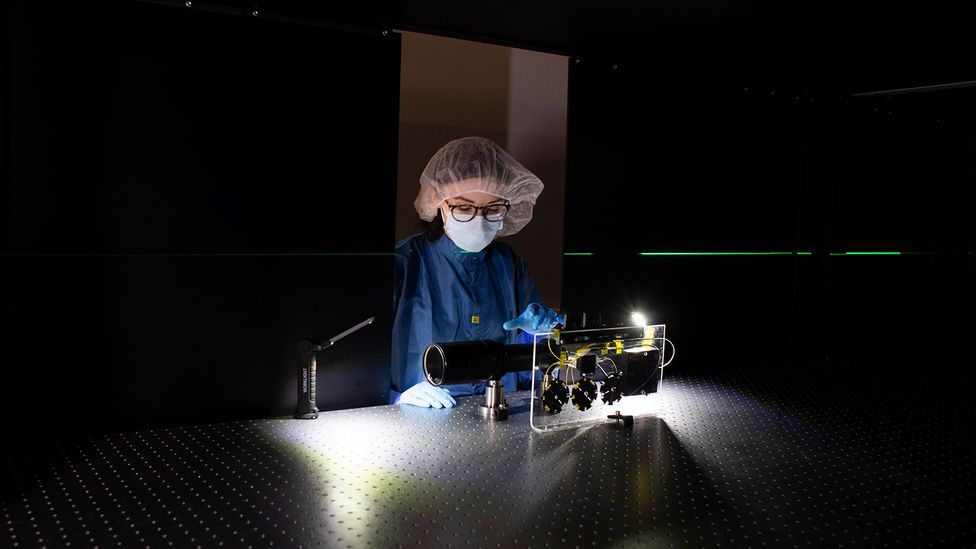
They are the most intense lasers ever built, and their beams are helping scientists probe the fabric of the Universe.
Inside a research lab at the University of Michigan, bright green light fills the vacuum chamber of a technological behemoth. It is the size of two tennis courts. The walls are shielded with 60cm (24in) of concrete to stop radiation leakage, and the staff wear masks and hairnets to ensure the delicate electronics are not affected.
This is Zeus, soon to be the most powerful laser in the US – and now it is whirring into life for its first official experiments.
Unlike the continuous lasers that scan your barcodes in shops, Zeus is a pulsed laser, firing in bursts a few quintillionths of a second long. Each pulse will be capable of reaching a peak power of three petawatts – equivalent to a thousand times the electricity consumption of the whole world. A laser capable of such extremely compressed energy will help researchers to study the quantum laws underpinning reality, for example, or recreate the conditions of extreme astrophysics out there in space.
But Zeus is not the only enormous laser that could reveal new discoveries in the coming years – a host of other high-powered lasers at facilities from Europe to Asia are hot on its heels. The field as a whole “is really growing”, says Karl Krushelnick, director of the Gérard Mourou Center for ultrafast optical science at the University of Michigan. “People are pushing the technology, and looking for interesting science.”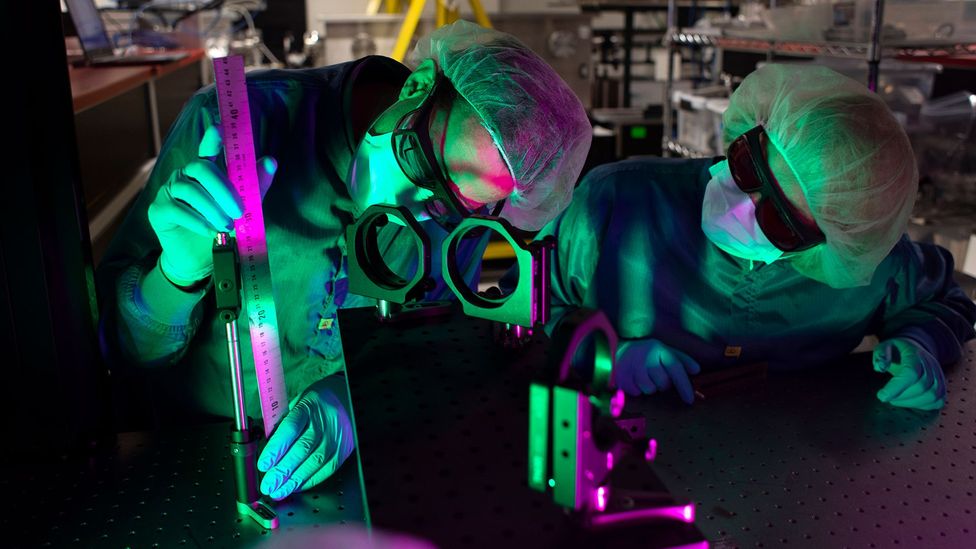
The Zeus laser, which fired up this month, could help probe the nature of the Universe
In the UK, a laser called Vulcan 20-20 will become the most powerful in the world when it is finished in 2029. It will produce a beam one million, billion, billion times brighter than the most intense sunlight. This single pulse will produce more than six times as much energy as is produced in the entire world – but will last for less than a trillionth of a second, with its target measuring just a few micrometres (or 0.001 of a millimetre). Like Zeus, Vulcan 20-20 will invite scientists from around the world to undertake experiments that may rewrite our understanding of the cosmos, nuclear fusion, and even create new matter.
The 20-petawatt Vulcan 20-20 is an £85m ($106m/€98m) upgrade on the existing Vulcan at the Central Laser Facility (CLF) in Harwell, Oxfordshire – which is being dismantled. Currently the size of two Olympic-sized swimming pools, its metre-wide mirrors weigh 1.5 tonnes (3,300lbs) apiece. Thick white wires snake out of the laser aperture, as the apparatus bends around the room. Considered state of the art when it was first built at the Rutherford Appleton Laboratory in 1997, the new laser will be 100 times brighter.
The “impressive thing isn’t just the power, though, but rather the intensity of the laser”, says Rob Clarke, experimental science group leader at the CLF. To understand that intensity, imagine 500 million million standard 40W lightbulbs. Now “compress that light into something around a tenth of the size of a human hair”, he says. “The result of that is a very, very intense source of light, and it is this that creates all the fun plasma stuff such as huge electric and magnetic fields, [and] particle acceleration.”
Vulcan 20-20 will allow scientists to conduct astrophysics research in the lab – recreating the conditions of distant galaxies to analyse the inner workings of the likes of stars or gas clouds, or how matter might behave when exposed to particular temperatures and densities. The field of study is driven by a desire to investigate the cosmos, explains Alex Robinson, the CLF’s lead theoretical plasma physicist. Astrophysical research is usually “observational”, he says. “You’re pointing some sort of telescope at it, and you see various things. But this then begs the question of what’s really going on.” The hope is that conducting experiments with a laser of such power will, for the first time, allow “really rigorous tests of whether certain theories could ever work or not”.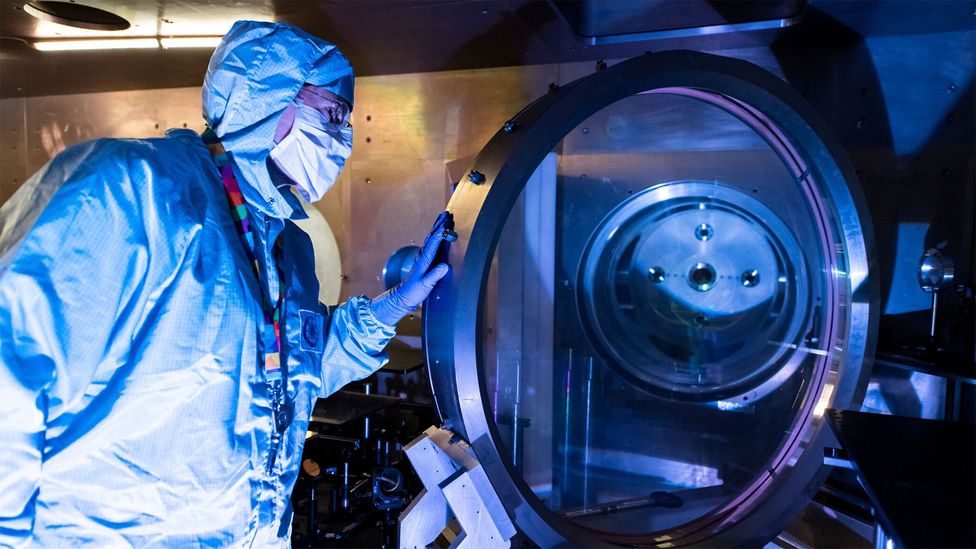
The UK’s Vulcan laser, now being dismantled to be replaced by a more powerful device
Among the mysteries they’re hoping to investigate in Oxford are the origins of magnetic fields, which surround the majority of substantial objects in the Universe, like stars and planets. “Why are those magnetic fields there? It’s not completely obvious,” Robinson says, and no observation can ever really go back and test why they first came into existence. One such testing method might involve merging matter to create shockwaves, and adding manufactured turbulence, such as the kinds caused by the likes of molecular clouds, planets and dust, to see whether that “could give rise to magnetic fields”.
Other experiments will explore the origins of cosmic rays (high energy particles that can travel almost at the speed of light), how jets (sprays of particles that shoot out from high-energy collisions) are formed, and the structure inside giant planets.
Researchers will also use the Vulcan 20-20 laser to investigate the formation of new materials. A form of boron nitride, a material harder than diamond, has potentially been found to be metastable – created in very high pressure and intensity conditions manufactured in the lab, that can afterwards survive at ambient temperatures. “And then the question is, what other materials could you make in the same way?” says Robinson. “Would they have fantastic electronic or optical properties? I don’t know. But at least there’s a nugget there telling us that there is something that’s worth exploring.”
Achieving fusion
Nuclear fusion is also on the ultra-high powered lasers’ hit list. In July, researchers at Lawrence Livermore National Laboratory’s National Ignition Facility, in California, used lasers to achieve a net gain in energy for a second time. Following the centre’s original breakthrough last December, the experiment this year created a higher energy yield than the first, again raising hopes that clean energy might replace our existing power sources. (Fusion reactions don’t release greenhouse gases or radioactive waste.)
Fusion has also been one of the key areas of study at the Extreme Light Infrastructure for Nuclear Physics (ELI-NP) hub in Măgurele, Romania – which at 10-petawatt strength retains the title of the world’s most powerful laser (Mourou, its director and namesake of the University of Michigan facility, said its creation is “on a par with a lunar landing, where failure is not an option”).
Over the past year, the Romanian laser’s operator has begun partnering with private companies to develop technology that might fuel the world’s first commercial fusion plants. Using the “Chirped Pulse Amplification” technique that earned Mourou and Donna Strickland the Nobel Prize in Physics in 2018, laser pulses will be stretched, reducing their peak power, before being amplified and compressed again. This “pretty much changed the face of laser development in its entirety”, Clarke says, allowing far higher intensities to be reached with a low power (higher ones risk destroying “the quality of the laser pulse and even the laser chain itself if you push it too hard,” says Clarke).
Their research into the physical processes of this interaction is expected to be published in three years, prior to the building of their first commercial fusion power plants in the 2030s.
Bigger is better?
Physicists are keen to emphasise the collaborative nature of the field – but size still remains something of a bragging point. According to Chang Hee Nam, director of the Center for Relativistic Laser Science (CoReLS) in South Korea and professor at Gwangju Institute of Science and Technology, their laser currently “holds the highest intensity laser record” in the world, reaching 10^23 W/sq cm – or an intensity as powerful as all light on Earth focused to just over one micrometre, or less than a fiftieth the diameter of a human hair.
The South Korean scientists are using the technology to explore, among other things, proton therapy – a cancer treatment that targets positively charged beams at patients’ tumours.
Research that can yield new medical applications, along with testing out century-old ideas about the state of the Universe, have been well explored on CoReLS’ four-petawatt machine – but the team aren’t stopping there. Nam says that “we are now pushing to have a higher petawatt laser; we are preparing some proposals for a 25 petawatt laser beam”. If commissioned within the next six years as he hopes, it will dwarf the as-yet-unbuilt Vulcan 20-20.
Still, Vulcan’s Clarke says that power and intensity is not everything. The most important metric now is “what can you do with it? What science are you driving? What are you going to get out of it?” These lasers, and the researchers working on them, care about one thing above all else, he says. “It’s about building it right, and using it right.”
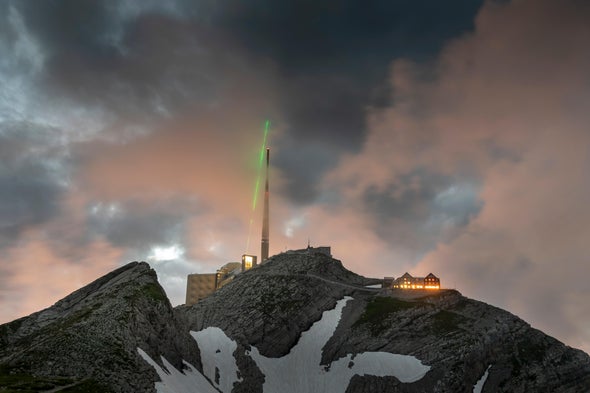
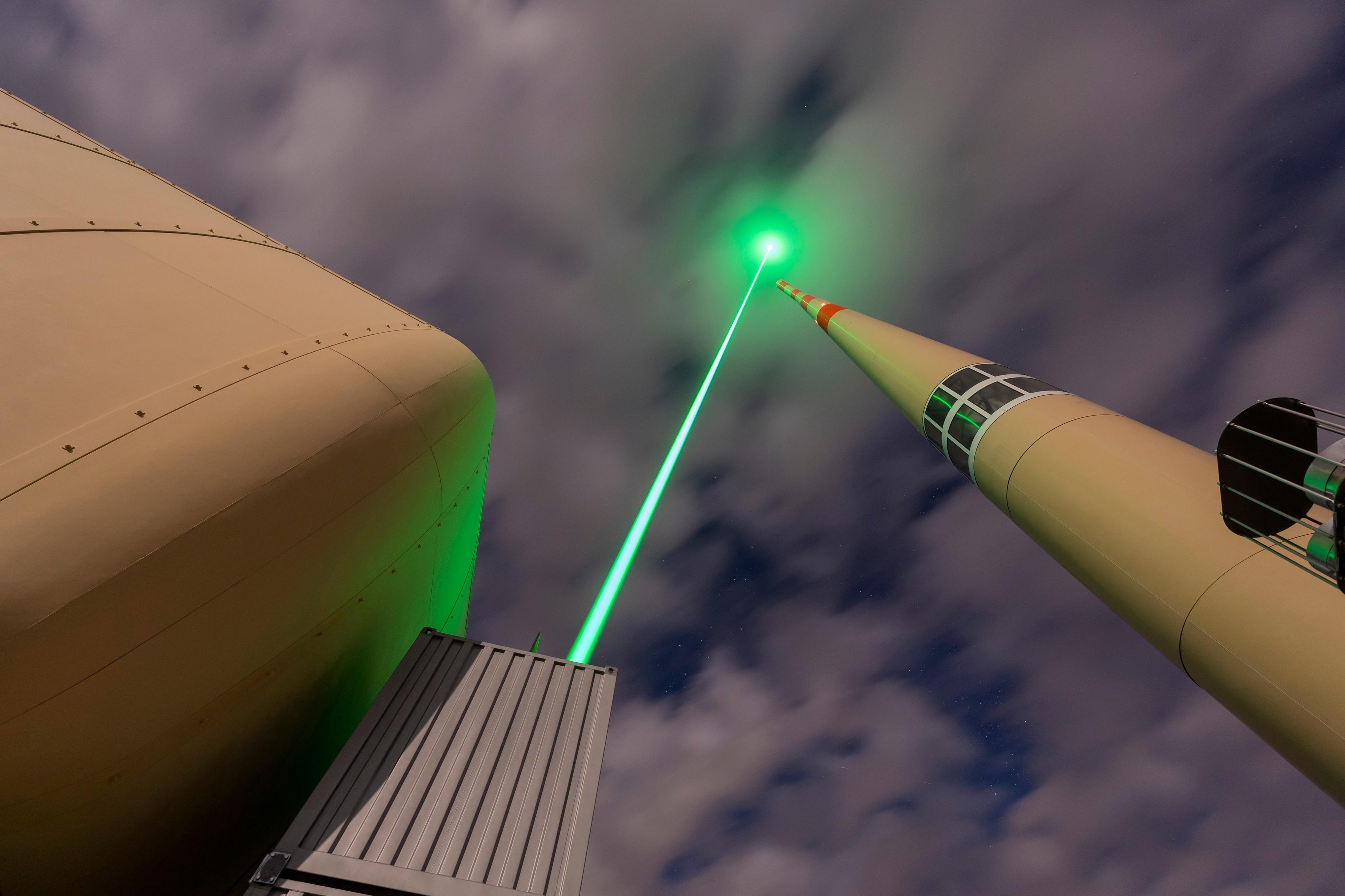





 This NASA image is an illustration of space debris.
This NASA image is an illustration of space debris.